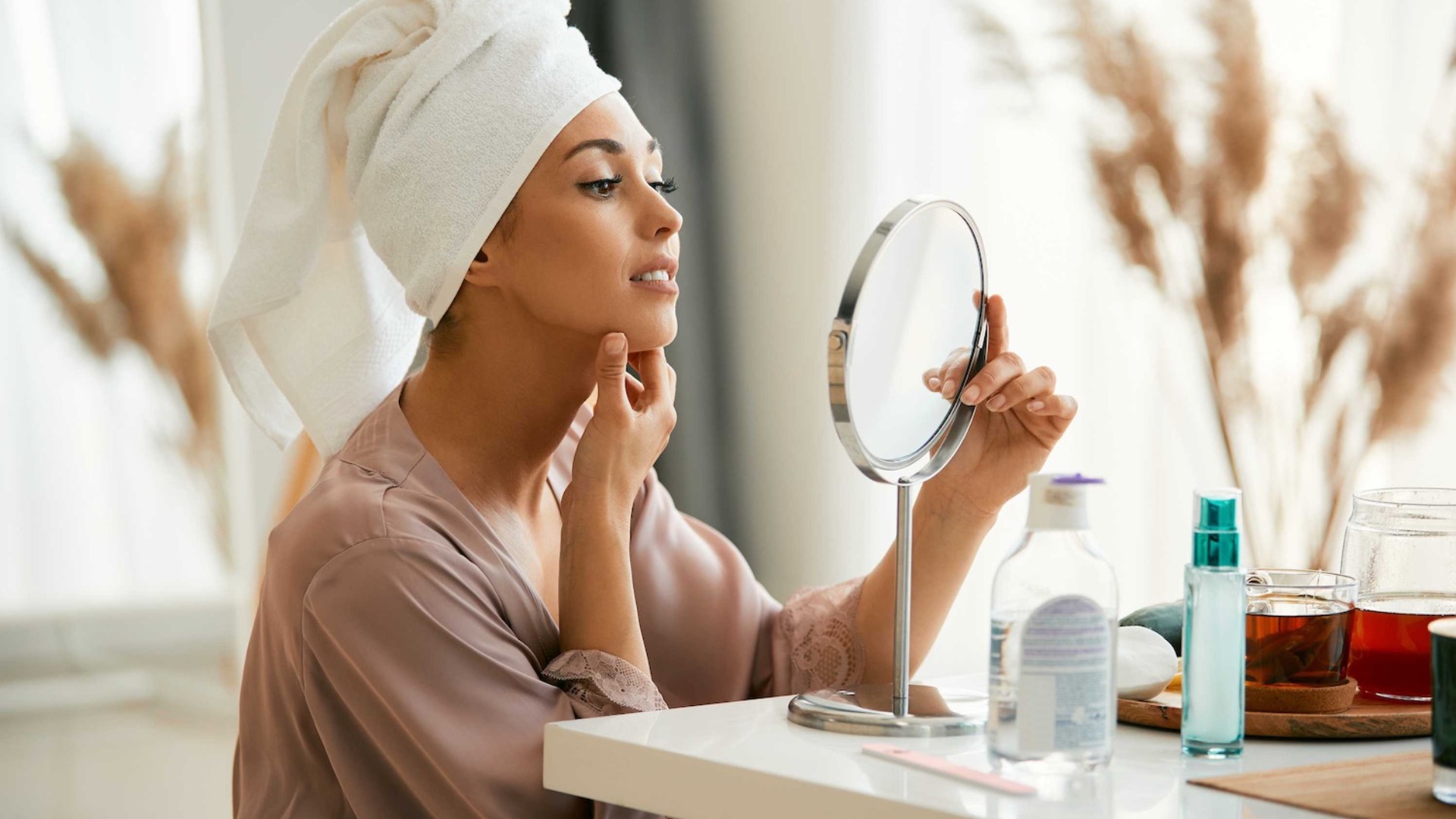Botox requires proper daily skincare, using gentle products and avoiding strong irritants; ensuring sufficient water intake to keep the skin hydrated; consistent sun protection, a balanced diet, and moderate exercise; quality sleep and stress reduction, avoiding pressure on the injection site, and regular small-dose touch-ups.
Skincare Tips
Skincare on a day-to-day basis after the injections of is quite important in maintaining this effect. The maintenance of skin barrier function, prevention of irritation that may accelerate the metabolism, is the most crucial mission of skincare. The pH of the cleanser used should be as close to the skin’s natural acidity so as not to strip away the lipid layer of the skin to avoid dryness or sensitivity. After the injection, choose those that contain effective active ingredients for hydration and repair, especially moisturizers with glycerin, hyaluronic acid, and ceramides, which help to lock in moisture into the skin, strengthen the skin barrier, and maintain the skin plump and hydrated. This helps in slowing down the breakdown of Botox.
In daily anti-aging care, antioxidants are an indispensable weapon. Application of serums that possess active principles, such as vitamin C, vitamin E, and coenzyme Q10, may help fight against free radicals and reduce damage to the skin due to environmental factors after injections of Botox, thus helping to keep it youthful. These active ingredients enhance the resistance of the skin and diminish harm caused by UV radiation or loss of collagen. It is not recommended to use high-strength acids during the first week after Botox-injection: AHA and BHA can increase skin sensitivity, as well as retinoids.
Hydration Matters
It is worth noting that besides maintaining the skin in good shape, sufficient provides a key role in maintaining injection effects. Hydration enhances the fullness and elasticity of skin cells, hence relaxing the injected muscles, which will enhance a more natural look. It is recommended to consume 2 liters of water every day to help keep bodily hydration in balance. Water metabolism has a close relation with the body metabolism, which, after injections, is particularly able to reduce the degradation through a balanced metabolism.
As to topical hydration, multi-layer moisturizing should be done. For example, use products containing hyaluronic acid and NMF, natural moisturizing factor, to create a barrier on the skin surface and block water loss. Then add ceramides and squalane, ingredients that help seal moisture deep inside. This multilayer hydration effect will keep the skin full and hydrated, smooth the muscle tension caused by dryness, and maintain the Botox effect. This is especially so during autumn and winter when the skin usually loses moisture, advanced hydration being an effective way for extending these results.
Avoid Sun Exposure
It is well known that ultraviolet rays are the true cause of accelerating skin aging, and post-Botox skin would be all the more fragile and sensitive to light exposure. UVA and UVB radiation can degrade skin collagen and elastin, causing sagging and deeper folds; hence, this speeds up the breakdown of the toxin. Broad-spectrum sunscreen with SPF50 and PA++++ should be used after injections to effectively block UVA and UVB damage to skin.
Besides that, physical protection, such as putting on a wide-brimmed hat, sunglasses, or carrying an umbrella to minimize direct UV exposure to the injected site, is equally crucial in daily outings. Sun exposure not only hastens the aging process but might provide a stimulus for inflammatory reactions leading to the onset of uneven pigmentation on the injected site and even affecting the symmetry of the outcomes. Within the first 1-2 weeks after the injection, the skin is still recovering and has very little resistance to light; for that reason, try to avoid long-term exposure to direct sunlight.
Healthy Lifestyle
A good lifestyle directly influences the duration and effects of Botox. Diet-wise, one is advised to reduce food with high sugar and fat content because excess sugar leads to a process called glycation, which then destroys the structures of collagen in the skin, reducing elasticity and, hence, accelerating aging. Consume more antioxidant-rich foods high in vitamins A, C, and E, along with trace elements such as zinc and selenium found in carrots, blueberries, broccoli, and nuts; these will help the skin resist free radical damage and slow down the breakdown of toxins.
Moderate exercises are also helpful in maintaining the effect. Low-intensity, long-duration aerobic exercises, like yoga, brisk walking, and Pilates, help blood flow in the body to increase the rate of metabolism in skin cells and promote nutrition uptake without increasing the excretion of toxins from the body. High-intensity exercise practices, for example, strength exercises or running, would increase metabolism further and may reduce the length of time the Botox injections last. Therefore, low-intensity exercises after Botox injections would increase the duration of results.
Regular Maintenance
Botox usually wears off over 3 to 6 months, hence regular maintenance is important. In this respect, as the toxin breaks down bit by bit, muscle tension will start to return, so a small touch-up injection every 3 to 4 months will continue to prolong the effects without having to wait for full wear-off of the results. This “small-dose, short-cycle” maintenance approach keeps results consistent and impairs the risk of resistance to Botox, therefore avoiding antibody production.
In daily life, avoid heavy massage or stimulation on the . Avoid scraping or heavy massaging of the face. This can interfere with even diffusion of the toxin within muscles. Light movements of the facial muscles help in maintaining the status of the injected area in its natural state-for example, smiling or slight raises of the eyebrows to allow the balanced and natural look of the effects.
Sleep and Rest
Good sleep quality prolongs the action of Botox. happens mostly at night, or particularly during deep sleep, when the body secretes growth hormones responsible for repairing destroyed cells and strengthening skin elasticity and resistance. Poor sleep results in poor skin cell vitality, increased evaporation of moisture, and faster detoxification. Aim for 7 to 8 hours of quality sleep each night to support skin cells in recovery, which would extend Botox’s action.
Sleeping position is important, too. Sleeping on one’s side or burying the face into the pillow will allow pressure on the injected area since toxin will be spread unequally in the facial muscles; thus, natural and symmetrical results cannot be achieved. Sleeping on your back is the ideal sleeping position, which can minimize facial pressure and avoid wrinkles around the injected site prematurely. You are advised to make the sleeping environment comfortable by keeping the light, temperature, and humidity of the room at average levels, as that will allow the skin to recover optimally and assure longer-lasting results.
Limit Stress
Results of Botox are greatly influenced by stress. Continued stress encourages the production of cortisol, which is the stress hormone accounting for the muscle tension that consequently accelerates the degradation process of Botox. Stress also produces enormous amounts of free radicals in the skin, which destroy cell membranes and accelerate aging and laxity of the skin. Chronic stress may void injection results more quickly.
Stress management is very important for maintaining results and can be achieved through meditation, deep breathing, or light exercise that relaxes the mind and eases tense muscles, hence lowering the release of cortisol. Meditation, yoga, and breathing exercises are all about how the body and mind can reach a relaxed state by way of reducing muscle tension, increasing the duration of Botox action. More importantly, spending time going out with friends and/or indulging in hobbies keeps the mind balanced and busy. Relaxation contributes to injection results and also ensures long-term general well-being





